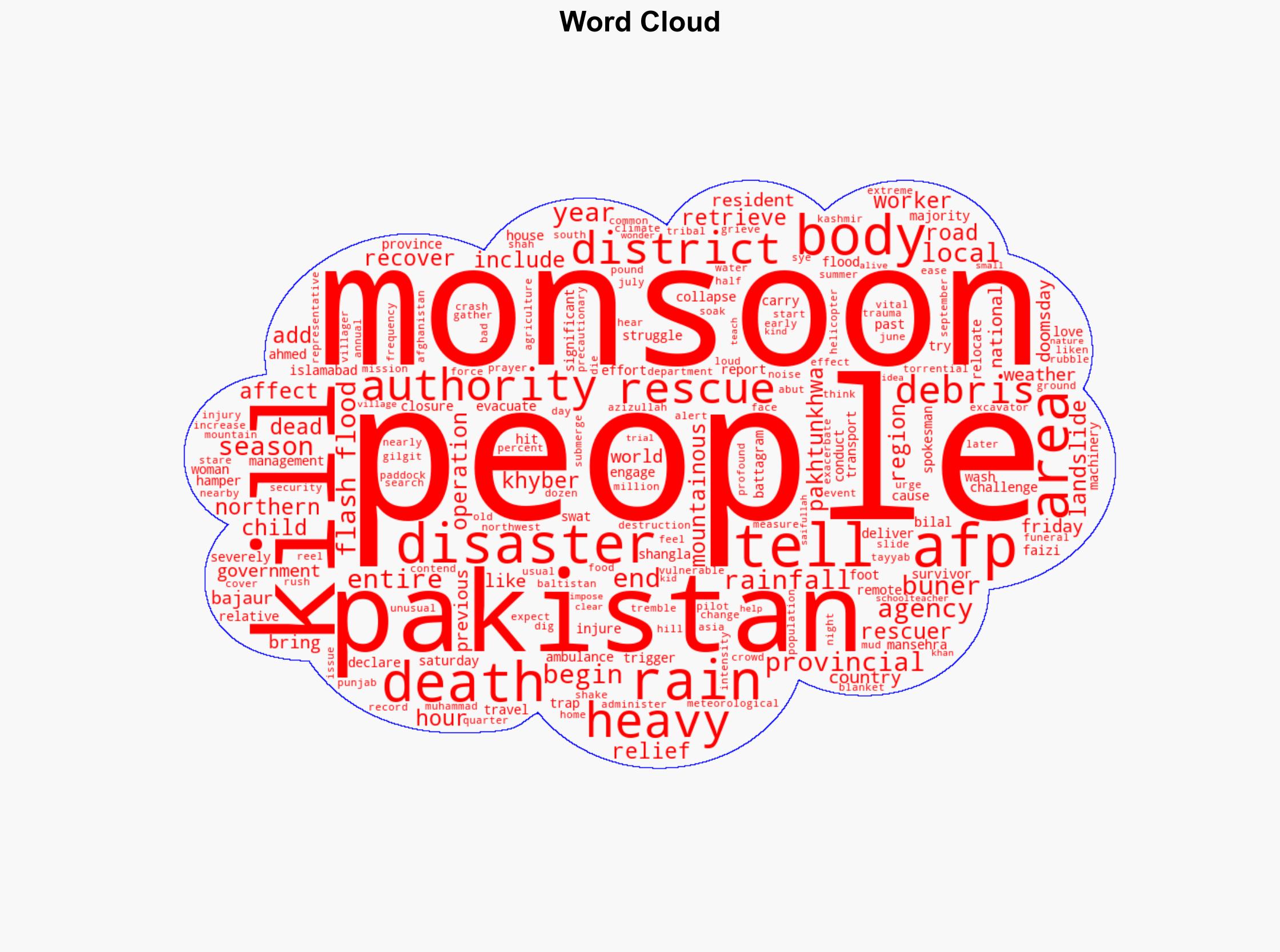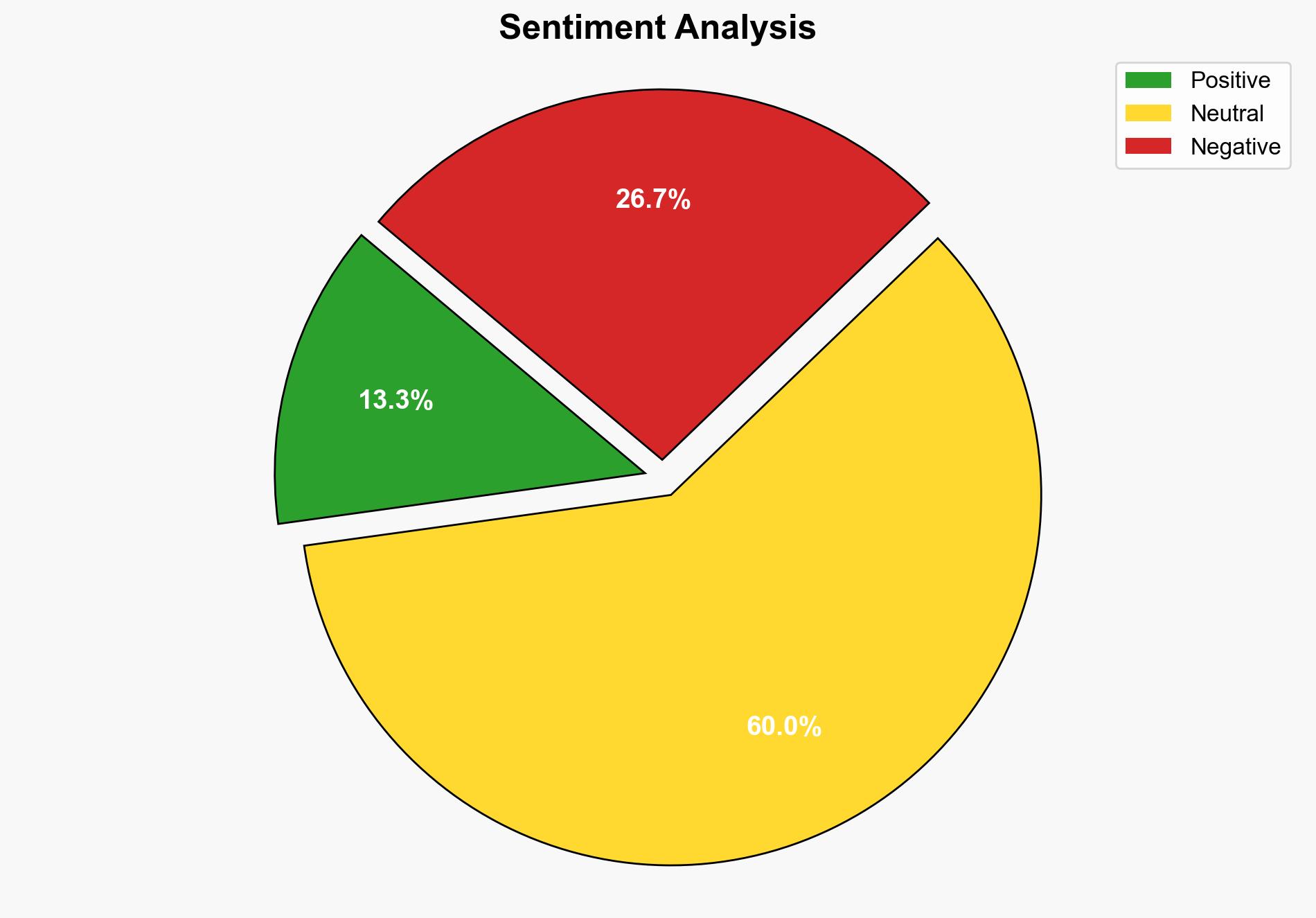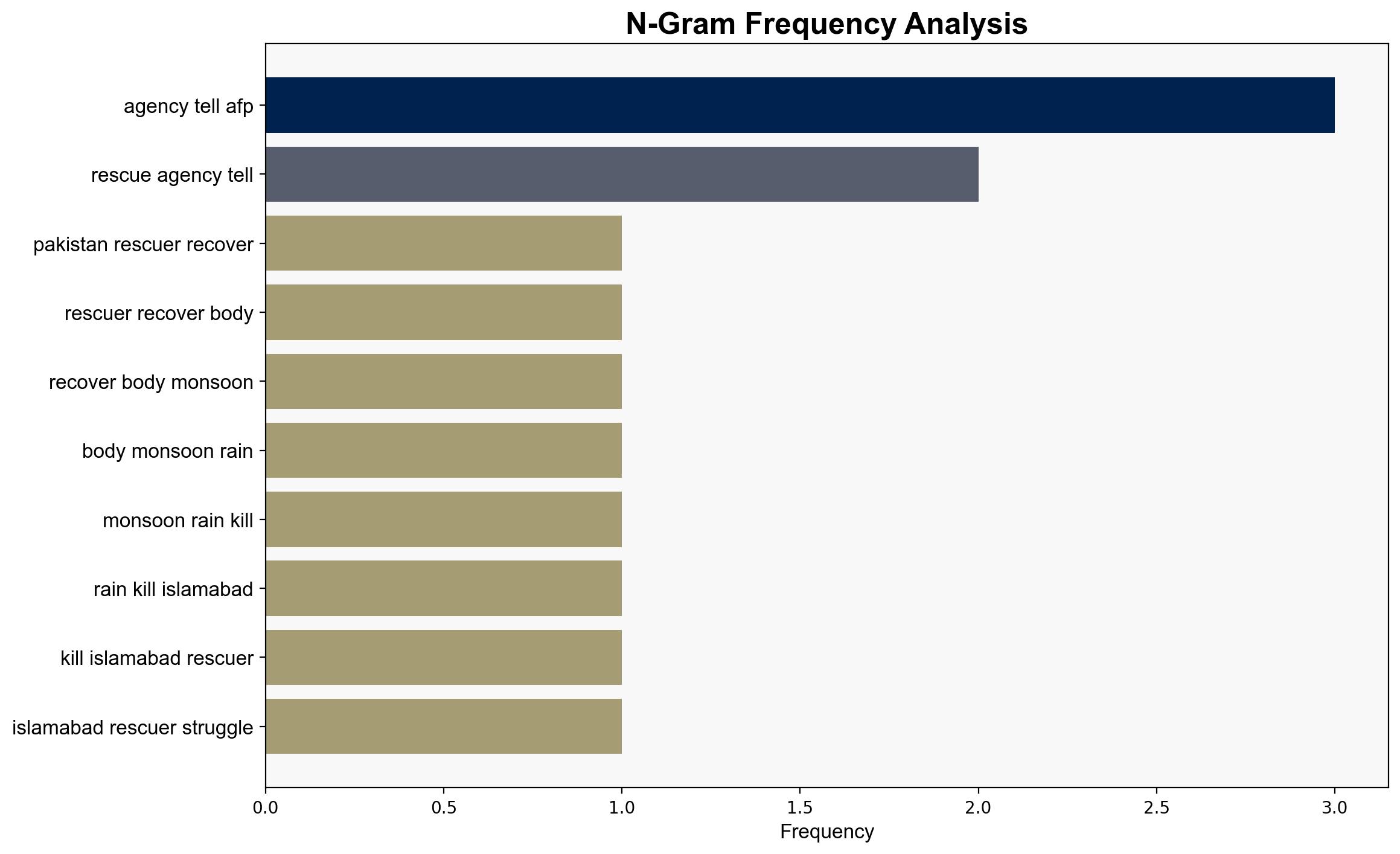Pakistan monsoon death toll rises to 225 in 48 hours disaster agency – Hurriyet Daily News
Published on: 2025-08-16
Intelligence Report: Pakistan monsoon death toll rises to 225 in 48 hours disaster agency – Hurriyet Daily News
1. BLUF (Bottom Line Up Front)
The monsoon rains in Pakistan have resulted in significant casualties and infrastructure damage, with a death toll of 225 in 48 hours. The most supported hypothesis is that climate change is exacerbating the intensity and frequency of monsoon rains, leading to increased vulnerability and disaster impact. Confidence level: High. Recommended action: Enhance disaster preparedness and climate adaptation measures.
2. Competing Hypotheses
1. **Climate Change Hypothesis**: The increased intensity and frequency of monsoon rains are primarily due to climate change, leading to more severe weather patterns and disasters.
2. **Infrastructure and Preparedness Hypothesis**: The high death toll and damage are primarily due to inadequate infrastructure and disaster preparedness, rather than changes in climate patterns.
3. Key Assumptions and Red Flags
– **Climate Change Hypothesis**: Assumes that global climate patterns are directly impacting local weather events. Red flag: Lack of specific local climate data to support the hypothesis.
– **Infrastructure and Preparedness Hypothesis**: Assumes that existing infrastructure and response mechanisms are insufficient. Red flag: Potential bias in underestimating the role of climate change.
– Missing data on the exact contribution of each factor to the disaster’s impact.
4. Implications and Strategic Risks
– **Economic Impact**: Damage to infrastructure and agriculture could lead to economic strain and increased poverty.
– **Geopolitical Risks**: Increased disaster frequency may strain government resources and affect regional stability.
– **Psychological Impact**: Repeated disasters could lead to trauma and decreased public trust in government capabilities.
– **Escalation Scenarios**: Continued inadequate response could lead to civil unrest or increased migration pressures.
5. Recommendations and Outlook
- Enhance early warning systems and community-based disaster preparedness programs.
- Invest in resilient infrastructure to withstand extreme weather events.
- Scenario Projections:
- Best Case: Effective adaptation measures reduce future disaster impacts.
- Worst Case: Continued high-impact disasters lead to economic and social instability.
- Most Likely: Incremental improvements in preparedness with ongoing challenges.
6. Key Individuals and Entities
– Azizullah, a resident of Buner district, provided eyewitness accounts of the disaster’s impact.
– Bilal Ahmed Faizi, spokesperson for the Khyber Pakhtunkhwa rescue agency, highlighted operational challenges.
– Saifullah Khan, a local schoolteacher, expressed concerns about the community’s trauma and resilience.
7. Thematic Tags
national security threats, climate change, disaster preparedness, regional focus





